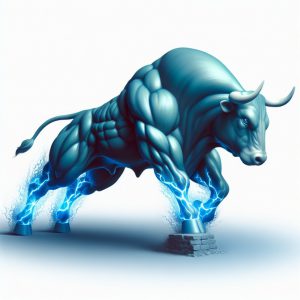
Digital Dilemma: Unveiling the World of an Online Addict
Updated on Dec 31, 2023
In a rapidly evolving world where screens have become omnipresent, and the digital realm has woven itself intricately into the fabric of our daily existence, a new phenomenon looms the enigmatic grip of ‘digital addiction.’ Understanding this pervasive issue’s complexities and underlying mechanisms becomes increasingly crucial in this age of interconnectivity and constant technological advancements.
As we navigate the ever-expanding digital landscape, we must recognize technology’s profound impact on our lives. From social media platforms that captivate our attention to immersive online experiences that blur the boundaries between the virtual and the real, our relationship with the digital realm has transformed how we interact, work, and perceive the world around us.
However, a darker side has emerged alongside the undeniable benefits of this digital revolution. The allure of constant connectivity and the endless stimulation provided by screens can lead individuals down a treacherous path of addiction. Digital addiction, often characterized by excessive and compulsive use of digital devices, poses unique challenges to individuals and society as a whole.
In this exploration of the digital dilemma, we delve into the intricate web of factors contributing to the development and perpetuation of digital addiction. From the psychological allure of instant gratification to the social dynamics of virtual communities, we seek to unravel the underlying mechanisms that keep individuals tethered to their screens.
By shedding light on the world of an online addict, we aim to foster a deeper understanding of this complex issue and explore potential strategies for prevention, intervention, and recovery. Recognizing the transformative power of technology while acknowledging its potential pitfalls, we strive to navigate the digital landscape with mindfulness, balance, and a critical eye.
Join us as we embark on this enlightening journey to uncover the realities of digital addiction, its impact on individuals and society, and the pursuit of a harmonious relationship with the ever-evolving digital world. Together, let us navigate the digital dilemma and forge a path forward that embraces the benefits of technology while safeguarding our well-being and preserving the essence of our human connection.
Online Addict: Navigating the Digital Maze for a Balanced Existence
Imagine this scene: you’re casually scrolling through your favourite social media platform, intending to catch up on your friends’ latest updates. However, time seems to slip away, and your feed becomes an endless abyss, pulling you in with every swipe, click, and notification. The line between the real and virtual blurs as your digital presence takes centre stage.
This is the essence of digital addiction, a pervasive force impacting millions globally. It’s not just a catchphrase; it’s a compelling phenomenon shaping our lifestyles, thoughts, and digital connections in this modern era.
But what is digital addiction? It’s the magnetic pull of our screens, whether the irresistible allure of social media, the captivating world of binge-watching, or the compelling appeal of online gaming. In a world where our devices have become extensions of ourselves, digital addiction is now integral to our daily routines.
If this concept resonates with you, you’re not alone. Digital addiction is a double-edged sword, offering limitless information and entertainment while carrying potential risks to our well-being and productivity.
So, why delve into this phenomenon? By understanding its inner workings, you can take control of your digital life, make informed choices, and strike a balance between the virtual and the real.
However, digital addiction isn’t confined to the personal sphere; it holds broader implications. It influences how businesses market their products, how social interactions evolve, and the strategies employed by content creators and tech giants to keep us engaged. The stakes are significant, and its influence is far-reaching.
Are you curious about the latest in digital addiction? As of December 2022, data and insights indicate a rapidly evolving landscape. There’s much to explore, from the emergence of attention-grabbing apps to heightened scrutiny of major tech corporations.
Join us on this journey as we delve into the inner workings of digital addiction. Together, we’ll uncover the most recent research findings, real-life anecdotes, and practical strategies for navigating this digital maze. Reclaim control over your digital life while staying well-informed about the ever-changing digital world.
Don’t let digital addiction remain merely a term; let it be a gateway to understanding, empowerment, and a more harmonious digital existence.
Online Compulsion’s Impact on Mental Health in the Digital Age
The impact of online compulsion on mental health is a significant area of concern in today’s digital age. Here is some additional information on this topic:
1. Increased Risk of Depression and Anxiety: Excessive use of online platforms, mainly social media, has been linked to higher rates of depression and anxiety. Constant exposure to carefully curated online personas, comparison with others, cyberbullying, and the fear of missing out can contribute to feelings of inadequacy, low self-esteem, and loneliness.
2. Disrupted Sleep Patterns: Engaging in online activities late into the night, such as scrolling through social media or playing video games, can disrupt sleep patterns. The blue light emitted by screens can interfere with the body’s natural sleep-wake cycle, leading to difficulties falling asleep or experiencing restful sleep. Poor sleep quality can exacerbate mental health issues and impair overall well-being.
3. Escapism and Avoidance: Online compulsion can serve as escapism, allowing individuals to avoid real-life problems and challenges. This can create a cycle where individuals seek refuge in the digital world instead of addressing their underlying issues, further impacting their mental health and overall functioning.
4. Diminished Social Connections: Excessive online engagement can lead to declining real-life social connections. Spending excessive time online can reduce face-to-face interactions, leading to feelings of isolation and detachment. This lack of meaningful social ties can contribute to poor mental health outcomes.
5. Negative Body Image and Eating Disorders: Social media platforms often emphasize appearance and body ideals, leading to body dissatisfaction and the development or exacerbation of eating disorders. Constant exposure to images promoting unrealistic beauty standards can contribute to distorted self-perception and unhealthy behaviours related to body image.
6. Impact on Self-Esteem and Identity Formation: Online compulsion can influence self-esteem, particularly in adolescents and young adults forming their identities. Negative feedback, cyberbullying, and the pressure to present a perfect online image can affect self-worth and self-perception.
It’s important to note that while online compulsion can have adverse effects on mental health, individual experiences may vary. Some individuals may be more resilient to these impacts, while others may be more vulnerable. Additionally, online platforms can serve as support, education, and connection sources when used in a balanced and mindful manner.
Addressing the impact of online compulsion on mental health involves fostering digital well-being practices. This includes setting boundaries on screen time, engaging in offline activities, cultivating real-life social connections, seeking support when needed, and practising self-care strategies. Additionally, promoting digital and media literacy can help individuals navigate online spaces more effectively and critically evaluate the content they encounter.
Further research and awareness are essential to understand better the complex relationship between online compulsion and mental health. By recognizing the potential risks and taking proactive steps to mitigate them, individuals can promote their well-being in the digital age.
Psychological Factors in Online Compulsion: Impact on Mental Health
Online compulsion, or excessive and uncontrollable engagement with online activities, can have significant psychological impacts. Understanding the psychological factors that contribute to online compulsion is key to comprehending its effects on mental health and well-being. Here are some important aspects to consider:
1. Mechanisms of Reinforcement: Online platforms are designed to be highly engaging and rewarding, employing various reinforcement mechanisms to keep users hooked. Features such as likes, comments, shares, and notifications trigger a sense of validation and social connection. The intermittent and unpredictable nature of these rewards, known as variable reinforcement, can be particularly compelling and reinforce the desire for continued online engagement.
2. Role of Dopamine: Dopamine, a neurotransmitter associated with pleasure and reward, plays a crucial role in online compulsion. Engaging in online activities that provide immediate tips, such as receiving likes or comments on social media posts or winning a game, can trigger dopamine release in the brain. The anticipation of these rewards and the subsequent dopamine release create a pleasurable experience, reinforcing the behaviour and driving the desire for more.
3. Escapism and Psychological Needs: Online compulsion can serve as a form of escape from real-life stressors, problems, or negative emotions. The online world offers control, distraction, and instant gratification. Individuals may turn to online activities to alleviate boredom, loneliness, anxiety, or depression. The appeal of escaping into a seemingly limitless digital realm can become a coping mechanism, albeit a potentially maladaptive one.
4. Impacts on Mental Health and Well-being: Excessive online compulsion has been associated with various negative mental health outcomes. It can contribute to symptoms of depression, anxiety, and social isolation. Constant exposure to carefully curated online personas can lead to feelings of inadequacy, low self-esteem, and negative self-comparisons. The pressure to maintain an idealized online image and fear of missing out on social events can further contribute to stress and emotional distress.
5. Cognitive Biases and Distorted Thinking: Online environments can amplify cognitive biases and distort thinking patterns. For example, individuals may engage in confirmation bias by seeking information or online communities that reinforce their beliefs or biases. This can lead to echo chambers and polarization. Additionally, anonymity and reduced social cues in online interactions can increase the likelihood of engaging in aggressive or impulsive behaviours, such as cyberbullying or online harassment.
6. Self-Regulation and Impaired Control: Online compulsion can impair self-regulation abilities, making it challenging to control and moderate online behaviour. Individuals may experience difficulty setting and maintaining limits on screen time, leading to losing control over their online activities. This lack of control can contribute to feelings of guilt, shame, and frustration, further exacerbating the psychological impacts.
Understanding these psychological factors can help individuals and professionals develop strategies and interventions to address online compulsion. Promoting digital literacy, educating individuals about the psychological tactics employed by online platforms, and fostering healthy coping mechanisms and self-regulation skills are essential for managing online engagement and preserving mental well-being.
It’s important to note that while online compulsion can have negative psychological consequences, not everyone who engages in online activities excessively will experience severe adverse effects. Individual factors, such as pre-existing vulnerabilities and overall life circumstances, can influence the degree of impact.
Screen Time Boundaries for Managing Online Compulsion
Setting boundaries on screen time is crucial for managing online compulsion and promoting a healthier balance with the digital world. Here are some strategies that can help:
1. Establish Clear Guidelines: Define specific rules and guidelines for screen time that work for you. This could include limits on hours or specific periods dedicated to using screens. Setting clear expectations helps create structure and accountability.
2. Use Time-Tracking Apps or Features: Utilize apps or built-in device features that allow you to track and manage your screen time. These tools can provide insights into your usage patterns and help you set goals for reducing screen time.
3. Designate Tech-Free Zones and Times: Identify certain areas or times in your daily routine where screens are off-limits. For example, you might establish no-screen zones in bedrooms or during meal times. Creating dedicated tech-free spaces and moments encourages more mindful and present interactions.
4. Practice the 20-20-20 Rule: To reduce eye strain and break up prolonged periods of screen use, follow the 20-20-20 rule. Every 20 minutes, look away from the screen and focus on an object at least 20 feet away for 20 seconds. This practice can help alleviate eye fatigue and encourage short breaks from screens.
5. Implement Digital Detox Periods: Set aside designated periods, such as weekends or evenings, for a digital detox. During these times, disconnect from screens altogether and engage in alternative activities like hobbies, exercise, reading, or spending quality time with loved ones.
6. Use App and Website Blockers: Install browser extensions or apps that block access to certain websites or limit your time on specific applications. These tools can help you resist the temptation to engage in excessive or unproductive screen time.
7. Prioritize Offline Activities: Actively seek out and engage in offline activities that you enjoy and that provide a sense of fulfilment. This could involve hobbies, outdoor activities, exercising, socializing with friends, or pursuing personal interests. You naturally reduce reliance on screens by filling your time with offline pursuits.
8. Practice Mindfulness: Develop a mindful approach to screen time by being intentional and aware of your digital habits. Regularly assess how screen time is affecting your well-being and make adjustments as needed. Cultivate self-awareness and observe the impact of screens on your mood, productivity, and overall life satisfaction.
Remember, setting boundaries on screen time is a personal process, and finding an approach that works for you is crucial. Experiment with different strategies and adapt them to your specific needs and lifestyle.
By establishing healthy boundaries, you can regain control over your screen time, reduce online compulsion, and create a more nutritional balance between the digital world and your overall well-being.
Concluding Reflections on the Journey of an Online Addict
In the ever-evolving landscape of the digital age, online compulsion has emerged as a formidable challenge that demands our attention. As of December 2022, this issue is a complex web of allure, dependency, and consequences, transcending mere convenience to become a matter of mental health and societal well-being.
The allure of the online world is undeniable, drawing us into a never-ending vortex of clicks, swipes, and notifications. Online compulsion isn’t just a catchphrase; it shares uncanny similarities with traditional addictions. The dopamine-driven highs, cravings for the next digital ‘hit,’ and the withdrawal symptoms all underscore its potency.
But why should you care about this phenomenon? Because it’s not confined to the digital realm, it has tangible implications for our mental health, relationships, and overall quality of life. Online compulsion is a captivating subject that warrants our collective understanding and action.
Our journey into the heart of online compulsion has been a quest to shed light on its multifaceted nature. We’ve explored the latest research and offered insights to bridge the digital and real gap. Whether you’re seeking a deeper understanding of this modern challenge or practical strategies to regain control of your digital life, our exploration has aimed to provide the answers you seek.
So, as we conclude this journey into the captivating enigma of online compulsion, remember that it’s not just about convenience or preference; it’s about striking a balance in the digital age. By understanding the intricacies of online compulsion, you’re better equipped to navigate the digital realm while safeguarding your well-being and connections with the tangible world. This journey isn’t just about unravelling the mysteries; it’s about taking control of your digital existence and embarking on a more balanced, fulfilling life. Dive in, and let’s uncover the captivating enigma of online compulsion together.
Dive into Engrossing Articles

Stock Market Manipulation: The Dominion of Financial Engineers

Permabear Doomster Debacle: Daring to Defy the Dire Predictions!

How Much Money Do You Need to Invest in Real Estate?

Mass Media Manipulates: Balancing Awareness and Trend Adoption

What is Mainstream Media? Navigating the Web of Truth & Deceit

Market Mastery: Unconventional Paths to Stock Market Success

The Pillars of Investment Success: Cultivating Patience and Discipline

Contrarianism and Mass Psychology: A Dynamic Duo for Market Success

How much money do i need to invest to make $1000 a month?

What are the leading economic indicators supposed to predict?

Examples of Groupthink: Instances of Collective Decision-Making

Flush with Cash: Investors on Edge, Hesitant to Deploy Capital

What is Buying Puts? Navigating the Profitable Possibilities

The Art of Efficiency: How Generative AI is Composing the Future of Work

“””Investing for dummies”””: Follow The Trend
Mass Psychology & Financial Success: An Overlooked Connection


